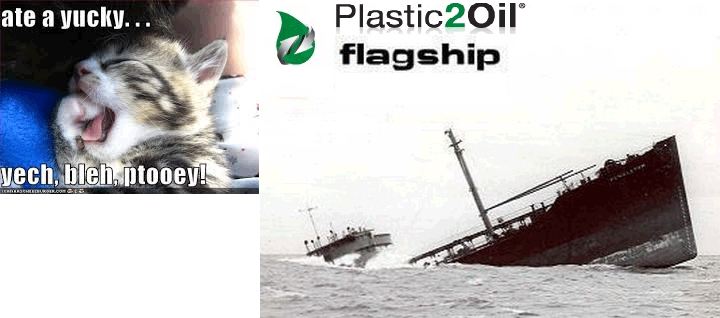So is something coming of this? http://www.seas.columbia.edu/earth/wtert/sofo...l%2018.pdf
On the basis of a technical and environmental comparison of the three pyrolysis technologies examined in this study, it is concluded that JBI Inc.’s P2O process would be the most appropriate for potential application in processing NYC’s municipal NRP. This process has the highest operating capacity at a low footprint and it has relatively low environmental impacts. Furthermore, the P2O process produces high quality, consumer-ready fuels and it has a low electricity demand because it utilizes energy from the combustion of the off-gas generated during pyrolysis. The P2O process also generates a significant net income per ton of plastic waste. It would take approximately 36 P2O units to process all of NYC’s municipal NRP.
The recycling of plastic wastes in NYC seems to have reached a plateau. Since landfills are becoming more costly and progressively farther away from NYC, pyrolysis of NYC’s municipal NRP would be advantageous because it has low environmental impacts and it recovers a valuable energy source that would otherwise be wasted.
Further research on the pyrolysis of NYC’s municipal NRP should include a feasibility study for the source-separation and collection of this waste material and for the siting, building and operation of a pyrolysis plant of initial capacity of 60 tons per day (21,900 tons per year), which would process plastic residue from the Sims MRF.
The problem I see is this:
4.3.5 Economic Analysis
In 2012, JBI Inc. commissioned SAIC Energy, Environment, and Infrastructure, LLC to conduct an independent
review of the P2O process and its business model. The economic analysis provided in this study is based on
the SAIC report and only provides a rough estimate of the expenses and revenues of the P2O process.
The SAIC base case business model for 2013 is based on a commercial facility consisting of 3 P2O
units operating at 75.3% uptime (275 days/year) with an 80% yield. The annual processing capacity of the
facility is approximately 31,700 tons per year and the product stream of the facility is 70:30 No. 6 oil-naphtha.
No. 2 oil generation and sale is not included in this business model.
Well, at least there is THIS...
Table 14 compares the P2O costs
provided in SAIC business model with costs estimated by Earth Engineering Center (EEC) for a pyrolysis plant
of the same capacity. In both cases, the oil yields calculated from the mass balance were used.
Based on the SAIC business model, a 31,700-ton per year commercial P2O facility operating at
approximately 75% availability is estimated to generate a net income of $357 per ton of plastic waste.
Meanwhile, the EEC analysis estimates a net income of $276 per ton of plastic waste. EEC estimates that the
costs of the P2O facility, specifically the capital cost, fixed operating costs, and general administrative costs,
should be higher than those provided in the SAIC model. Furthermore, the EEC analysis takes into account
the additional cost of collection, sorting, and delivery of plastic waste to the pyrolysis plant.
The business model of JBI Inc. is to develop processor partnerships with clients who generate large
volumes of plastic waste. From this partnership, the client would avoid the cost of tipping fees (which are
fees for transporting and disposing waste in landfills) and would have access to affordable clean burning
fuels. JBI Inc. owns and operates all of its P2O units; it does not sell units. The fuel products that are
generated by the P2O process are sold to fuel retailers, fuel brokers, and directly to end-users.

 (0)
(0) (0)
(0)